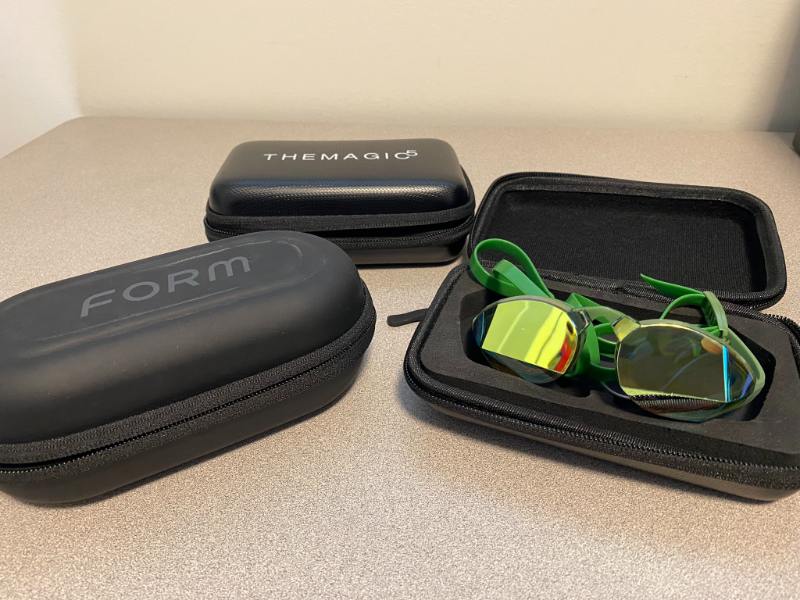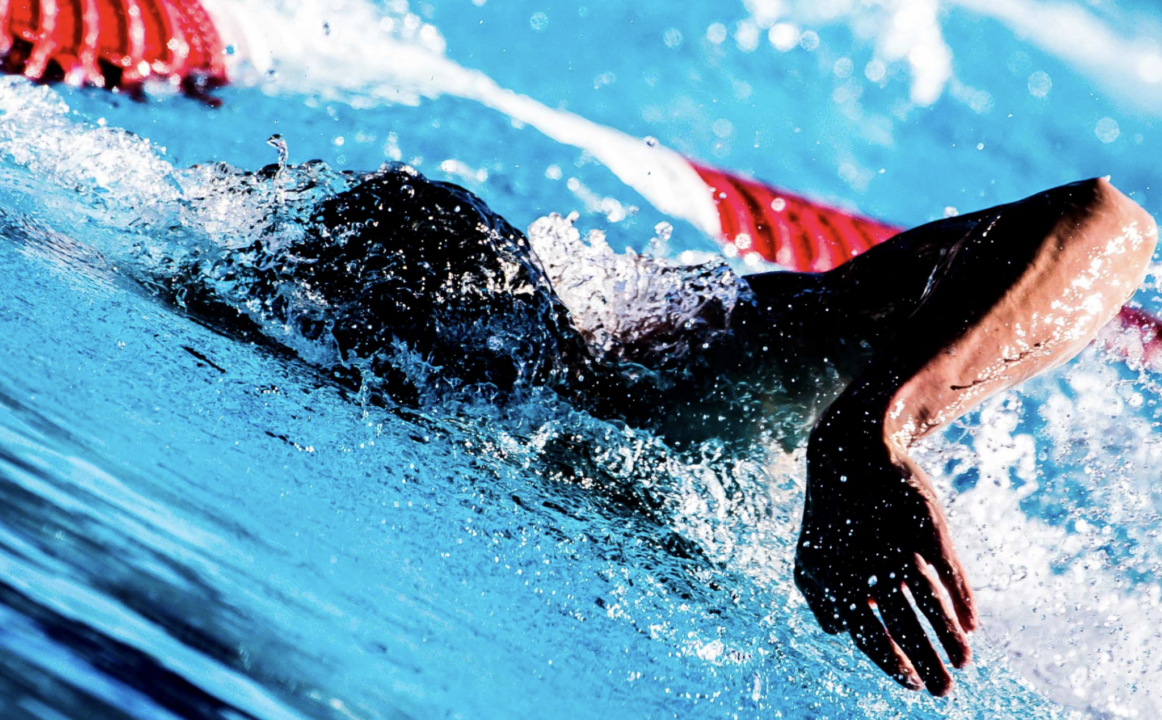Looking to increase the visibility and lifespan of your swimming goggles? Here are some quick tips for cleaning and caring for swim goggles.
Swim goggles are one of the essential types of swimming equipment when hitting the pool.
Goggles increase visibility under the water, helping you nail those flip turns, finish on a full stroke, and avoid running into other swimmers in your lane.
Swim goggles also protect your eyes from pool chemicals, reducing irritation and itchy eyes.
Your swim goggles take care of you, so take care of them!
In this guide, we’ll share tips to extend the lifespan of your swim goggles and keep the lenses clear so you can focus on chasing faster times in the pool instead of straining to see through dirty goggles.
Let’s dive right in.
Rinse with fresh water after swimming.
Chlorine is the most widely disinfectant used in swimming pools to keep water safe for laps.
But while it’s zapping bacteria and mold in the water, it’s also slowly oxidizing the rubber, silicone, and plastic in our swim goggles, degrading them.
Over time, this can lead to cracking, brittleness, and loss of elasticity in goggle straps and gasket skirts.
Once you’ve completed your swim workout, rinse your swim goggles with fresh water to prevent chlorine from lingering on them.
This step takes just a minute or two and can make a significant impact on the lifespan of your swim goggles while also helping to keep them clean.

Use mild soap to wash goggles.
Rinsing swim goggles is a good start for cleaning, especially for swimmers who spend moderate time in the water.
But after extended use, or if your swim goggles have accumulated dirt and grime, it’s time to wash them.
The washing agent is critical here; avoid using strong cleaners and stick with a gentle wash that won’t damage the lens, rendering them cloudy and stripping the anti-fog coating.
See also: How to Choose the Perfect Set of Swim Goggles
Baby shampoo or dishwashing soap can do the trick. For especially dirty swim goggles, soak for 20-30 minutes before a light scrub of the gasket skirt and head straps.
For the inside of the goggles, do not scrub the lens and do not allow soap to accumulate in the lens. Instead, rinse with warm water and let it air dry to keep the anti-fog coating intact.
Dry with a microfiber cloth.
Once rinsed and cleaned, take a microfiber cloth, gently dry the swim goggles, and let them air dry for as long as possible.
This isn’t always realistic in many cases, as we all have places to be and things to do once the workout is done.
But if you can let them dry out a little before you drop them back into your swim bag, it will reduce the likelihood of the goggles getting moldy.
Replenish the anti-fog with a goggle spray.
Fog and condensation are some of the biggest frustrations associated with swim goggle use.
Foggy swim goggles mean you are constantly squinting and straining to see the pace clock, other swimmers, and the wall. And, of course, this means we are dabbing and wiping our fingertips across the inside of the lens, smearing the anti-fog.
The delicate anti-fog coating on swim goggles inevitably wears down, regardless of wandering fingers, and while some swimmers go the organic route and spit into the lens (yes, this works), anti-fog sprays for swim goggles are dirt cheap and very effective.
Applying an anti-fog, either before a swim workout, or as part of a post-swim goggle care routine, will extend the clear vision of your swim goggles.
Note: Carefully follow the instructions for anti-fog sprays. Many formulas are designed to be applied and then lightly rinsed before strapping your swim goggles on your face.
Clean with an anti-fog towelette.
Swimmers who want a combination of cleaning and anti-fogging will appreciate anti-fog towelettes. They are small, packable, and pre-moistened to defog and clean the goggle lenses inside.
Anti-fog towelettes are a great option for swimmers who have had bad experiences with antifog sprays or don’t want to wait for a spray to dry before jumping in the pool.
The towelettes are fast-drying, in my experience taking no longer than 30-40 seconds, which means you can apply them while your coach outlines the main set and be ready to dive in for warm-up with clean and clear swim goggles.
Use a goggle case.
Swim goggles are typically made with polycarbonate gaskets, which can take a beating. That doesn’t mean they should, though!
Swim goggle cases are an inexpensive way to protect your goggles between swim workouts.

Instead of bouncing around the bottom of your swim bag, getting scratched and dirty, the goggles can rest easily in a goggle case.
Many swim goggle cases come with vents to allow moisture to dissipate. New goggles frequently ship with a case, and for those that don’t, you can pick one up for $5-7.
Wrapping Things Up
Proper care and cleaning of swim goggles is essential to maintain longevity, keep the lenses crystal-clear, and improve your overall swimming experience.
By including some of the above tips, including rinsing and storing your swim goggles regularly, you can prolong their lifespan.
Care for your swim goggles and swim on!
Related Resources:
7 Best Kids’ Swimming Goggles that are Comfortable and Don’t Leak. Whether looking to splash around or start with the swim team, here are the best kids’ swim goggles that are comfortable, don’t leak, and enhance swimming performance.
8 Best Open Water and Triathlon Swim Goggles. Open water swim goggles protect eyes from the sun, help swimmers sight, and train smarter. Here’s a look at the best open water goggles for swimmers and triathletes.
7 Best Prescription Swim Goggles for Clean Vision and Fast Swimming. Looking to swim without glasses and contacts? Here are the best prescription swim goggles for clear vision in the pool.
ABOUT OLIVIER POIRIER-LEROY
Olivier Poirier-Leroy is a former national-level swimmer, author, swim coach, and certified personal trainer. He’s the author of YourSwimBook, a ten-month logbook for competitive swimmers.
 He’s also the author of the recently published mental training workbook for competitive swimmers, Conquer the Pool: The Swimmer’s Ultimate Guide to a High-Performance Mindset.
He’s also the author of the recently published mental training workbook for competitive swimmers, Conquer the Pool: The Swimmer’s Ultimate Guide to a High-Performance Mindset.
It combines sport psychology research, worksheets, anecdotes, and examples of Olympians past and present to give swimmers everything they need to conquer the mental side of the sport.
Ready to take your mindset to the next level in the pool?
Click here to learn more about Conquer the Pool.
